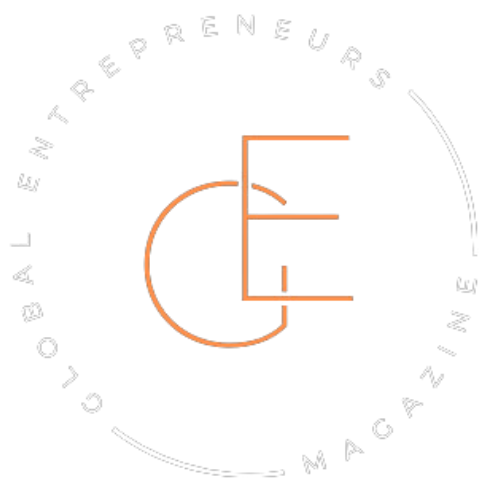At first, it was just fatigue.
Emails piled up. Social posts went out late. Ideas for new offers sat untouched in the Notes app. Every day felt like playing whack-a-mole with to-do lists. That’s the trap so many entrepreneurs fall into—spending more time inside the business than building it.
Then something shifted.
It wasn’t a flashy tool or a viral tactic. It was subtle. Quiet, even. A reframe that changed everything: What if I stop trying to do it all myself? What if I get a partner who never sleeps, never complains, and works at the speed of thought?
That partner wasn’t a new hire. It wasn’t a virtual assistant from across the globe. It was a set of tools powered by artificial intelligence—but used with intention, not laziness.
This isn’t the sci-fi version of AI people argue about online. It’s not robots writing your book or running your business. It’s something else entirely.
It’s a new kind of collaboration. And it’s helping scrappy founders move faster, think clearer, and build smarter—not because they’ve given up control, but because they’ve learned how to share the load.
The myth of machines replacing people
People hear “AI” and jump straight to the worst-case scenario. Layoffs. Cold automation. A world run by machines while the rest of us scramble to stay useful.
But that’s not what’s happening on the ground.
Most entrepreneurs aren’t handing the wheel to AI. They’re sitting in the driver’s seat with better navigation. They’re not replacing themselves—they’re removing the stuff that never needed their brain in the first place.
Think of the founder who spends hours responding to repetitive client questions. Or the consultant who wastes half the day formatting reports. These aren’t tasks that require intuition or experience. They’re just draining.
And that’s where AI slips in—not to replace the human behind the business, but to give them space to do the real work again.
Some of the savviest entrepreneurs aren’t treating AI as a threat. They’re treating it like a junior partner—one that works fast, doesn’t get distracted, and never needs a coffee break.
That’s the real story playing out. Quietly. Without fanfare. Just a bunch of people learning how to think clearer and move quicker when they stop trying to do everything alone.
What this collaboration actually looks like
It’s not a dramatic handoff. It’s small, deliberate moves.
An entrepreneur uses AI to draft product descriptions, but the final voice? Still theirs. A founder leans on it for research—summarizing ten articles in seconds—then pulls out the insights that matter. A podcaster outlines an episode with AI, but the story? That still comes from them.
This isn’t outsourcing creativity. It’s removing friction.
Humans still do what they’re best at: making judgment calls, spotting nuance, deciding what feels right. AI takes care of the stuff that burns time without adding value—data sorting, early drafts, formatting, repetitive replies.
It’s a rhythm.
You think. AI drafts.
You review. AI refines.
You direct. AI supports.
No magic. No shortcuts. Just a smarter way to move through work that used to steal your focus.
The edge it gives small teams

Most people don’t see it coming. They assume the business is bigger than it is. More staff. More budget. More time.
But behind the scenes? It’s often two people and a few smart tools.
A solo coach managing an entire content calendar. A tiny agency delivering client work faster than their competitors. A Shopify store owner replying to support emails in minutes—without touching a keyboard.
Cutting corners? No, it’s about finally keeping up.
When AI handles the first drafts, the scheduling, the summaries—teams get their hours back. And that extra time? It turns into strategy, creativity, growth. The things most founders push to the bottom of the list because they’re too busy treading water.
It’s not always obvious on the outside. But inside these small businesses, things feel lighter. Calmer. More doable.
That’s the edge—and it’s not loud. It’s quiet, consistent, and compounding.
Where it works best (and where it doesn’t)
Not everything should be passed off. But a lot of things can.
AI shines when the task is structured, repetitive, or just plain annoying. Drafting cold emails. Cleaning up spreadsheets. Transcribing meetings. Generating rough outlines or summarizing research. These are the jobs that drain time but don’t need your voice.
Creative work? It gets trickier.
You can ask AI for ten headline options. But knowing which one actually hits? That still takes a human. The same goes for tone, timing, and context. AI can guess. You can feel it.
Where things break down is when people stop paying attention. When they hand off too much, too fast, and expect the machine to care about quality.
It doesn’t.
So the smartest entrepreneurs draw a line. They use AI as a draft partner, not a final voice. They automate what’s safe, but guard the parts that carry trust, reputation, and nuance.
That balance keeps the work sharp—and keeps you in control.
Collaboration, not dependency
There’s a big difference between using a tool and leaning on it too hard.
Some entrepreneurs start strong—testing out AI for a few tasks—then slowly stop thinking for themselves. They let it write, respond, plan, and sometimes even decide. And just like that, the sharpness fades.
But the ones doing it right? They’re still in the mix.
They treat AI like a sharp intern. It helps move things along, but it still needs direction. It still needs editing. It still needs someone who knows what matters.
This kind of collaboration isn’t about checking out. It’s about being more present in the work that counts.
And over time, something interesting happens. You don’t just save time—you build skills. You write faster. Think clearer. Spot patterns quicker. Because you’re not stuck in the weeds anymore.
You’ve got room to grow—without giving up the craft.
Building your own human-AI workflow
It doesn’t need to be complicated.
Start with one bottleneck. Something that slows you down every week. Maybe it’s writing social captions. Maybe it’s answering the same five questions from clients. Pick one and test what happens when AI handles the first pass.
Don’t expect it to be perfect. That’s not the goal.
The goal is momentum—getting from idea to execution faster without burning out halfway. Once that first task feels smoother, you’ll know where to go next.
Some founders build routines around it. Mornings start with an AI-generated to-do list. Content plans come together in half the time. Notes get turned into emails, blogs, outlines—anything with structure.
Others keep it looser. A brainstorming partner when they’re stuck. A research assistant when they’re short on time.
There’s no single formula. Just one question: Where am I doing work that doesn’t need my full brain?
Once you answer that, you’re halfway there.
The quiet edge that compounds
Most people won’t notice it at first.
They’ll see your content going out on schedule, your offers landing cleaner, your business running smoother. What they won’t see is the small shift that made it all possible—offloading just enough to get your head above water again.
That’s the quiet edge of human-AI collaboration. It doesn’t scream for attention. It just builds, slowly, day by day.
One cleared inbox. One faster draft. One hour saved.
The founder who once felt stretched too thin starts showing up with sharper ideas. The team that used to scramble now moves with consistency. Not because the work vanished—but because the weight got shared.
This isn’t a shortcut. It’s a smarter pace. And the ones who figure it out early? They don’t just catch up.
They start pulling ahead.



